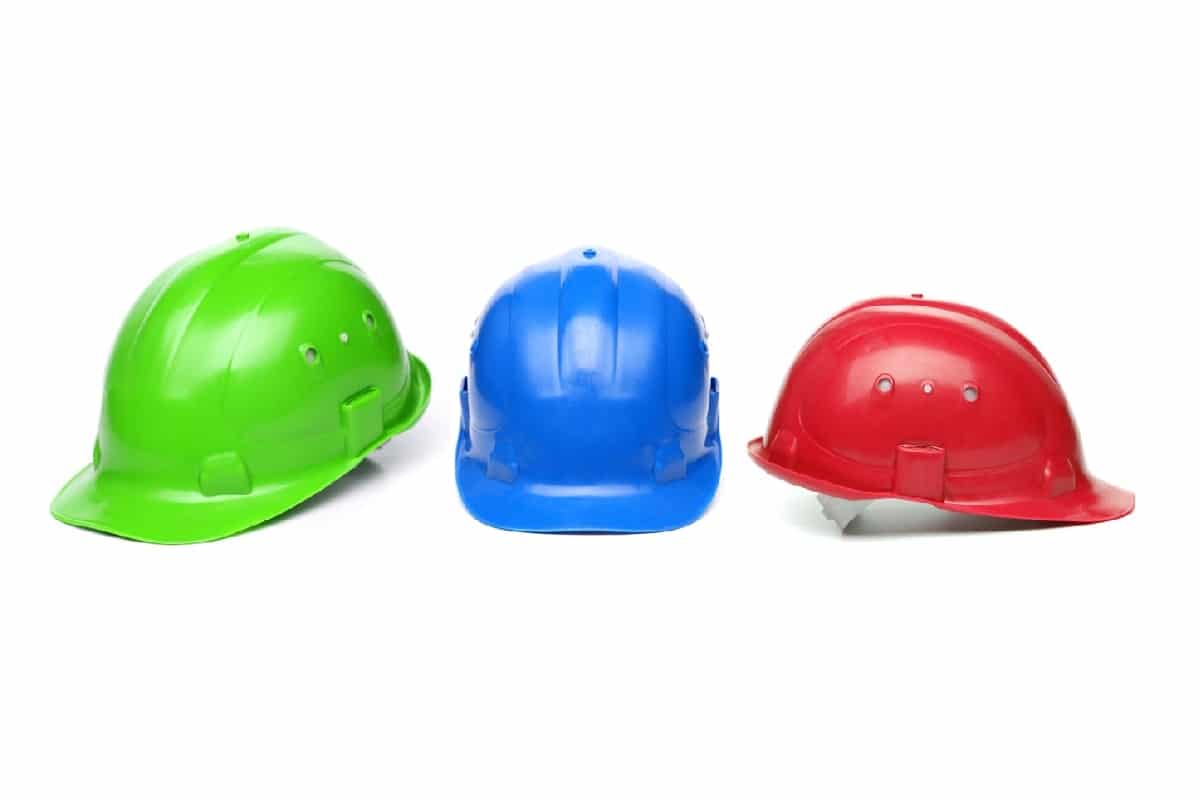The hard hats are one of the most important pieces of safety equipment that any company will have to buy for its employees. These hats are worn each day to prevent serious injuries from occurring on the job site.
When you are looking for the perfect hard hat, you need to take into account the hard hat colors that will work best for you and your employees.
Purpose of the Hard Hat Color Code
Hard hat colors help identify workers and signify their responsibilities on the job site.
This allows supervisors, individual workers, and teams of workers to quickly identity each other. This saves time and effort when resolving situations that may arise. Color-coded hard hats provide extra safety, but more importantly they prevent delays and confusion on crowded job sites.
For instance, color coded hard hats prevents delays and protects workers during:
- Multi-floor building construction
- Different tasks, such as electrical, concrete, welding, etc
- Starting and shutting down heavy machinery
- Finding the right person during emergencies
- Finding the right person to give and obtain instructions

All industries, organizations, and countries share similar color coding for hard hats. Even with variations, the overall categorization of the colors remains the same depending on the role and task of the worker.
This is similar to sailors on aircraft carrier flight decks which all wear different colored uniforms that signify their roles. In such a highly dangerous environment, this serves to keep sailors and airmen safe during flight operations.
Are Hard Hat Color Codes Required?
No. The Occupational Safety and Health Administration (OSHA) does not provide color standards for hard hats. It is up to each employer to select which colors are for which job titles and tasks.
Hard Hat Color Options
If you look around at any construction or building site, you will find different colored hard hats being worn by teams and individual workers. There is a well-defined purpose to this and many visitors to job sites or those unfamiliar with the hard hat color code may be wondering about it. If you are a newly hired worker, you will become aware of the color code fairly quickly.
Hard hats come in a variety of colors, including:
- White
- Yellow
- Brown
- Gray
- Blue
- Red
- Green
- Orange
- Pink
Recommended Hard Hats
PYRAMEX Ridgeline Cap Style Hard Hat, Vented, 4-Point Ratchet Suspension, Black Graphite Pattern
What Hard Hat Colors Mean
White hard hat: White hard hats stand out because they are not colorful. These are usually worn by supervisors, managers, foremen, architects, and engineers. White hard hats are meant for higher-ranking individuals on work sites.
Green hard hat: Green hard hats are often worn by safety workers and inspectors. New hires, “rookies”, and other trainees can wear green hard hats to signify their lack of experience or tenure.
Yellow hard hat: General laborers, heavy equipment operators, and earthmovers wear yellow hard hats. Yellow stands out and makes these workers easy to spot which gives them safety.
Brown hard hat: Workers tasked with welding, burning or other high-heat jobs will often wear brown hard hats.
Orange hard hat: Orange is highly visible with makes it ideal for road construction workers, new hires and visitors to the site. They are also worn by workers that assist crane operations so the crane operator can spot them from high up.
Blue hard hat: These are worn mostly by medical workers, electricians, carpenters, and technical advisors. Short-term, interim, or visiting workers can also wear blue hard hats.
Red hard hat: Its no surprise that firefighters and emergency workers often wear red hard hats.
Grey hard hat: These are most often given to visitors of work sites.
Pink hard hat: These are often worn by female workers or new hirers so they stand out amongst the crew. They can also be worn by temporary workers or as a short-term replacement for one that has broken.
Colored hard hats allow the successful completion of ordered tasks while helping workers avoid injury. They can also save time and money by allowing workers to be identified quickly, avoiding confusion.
